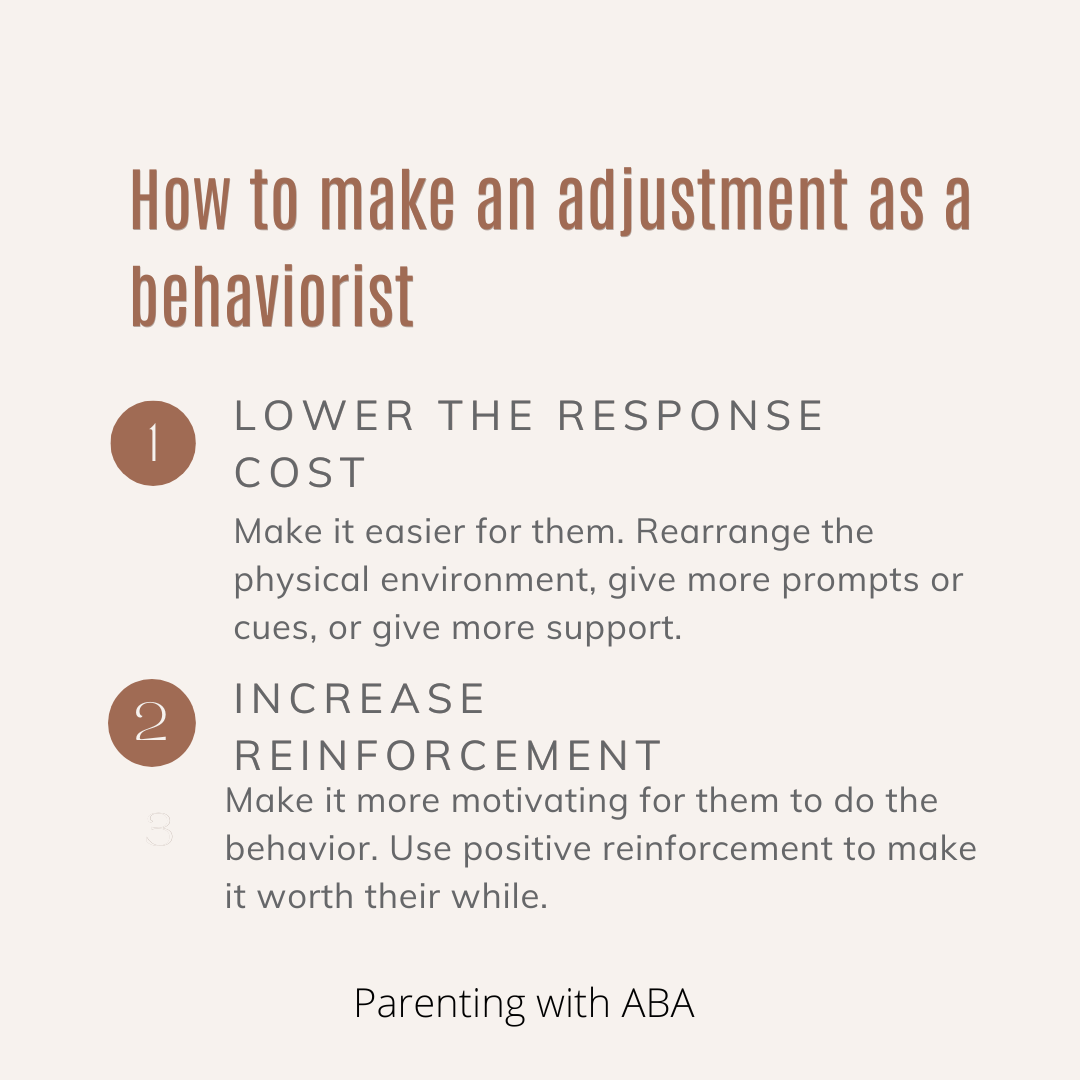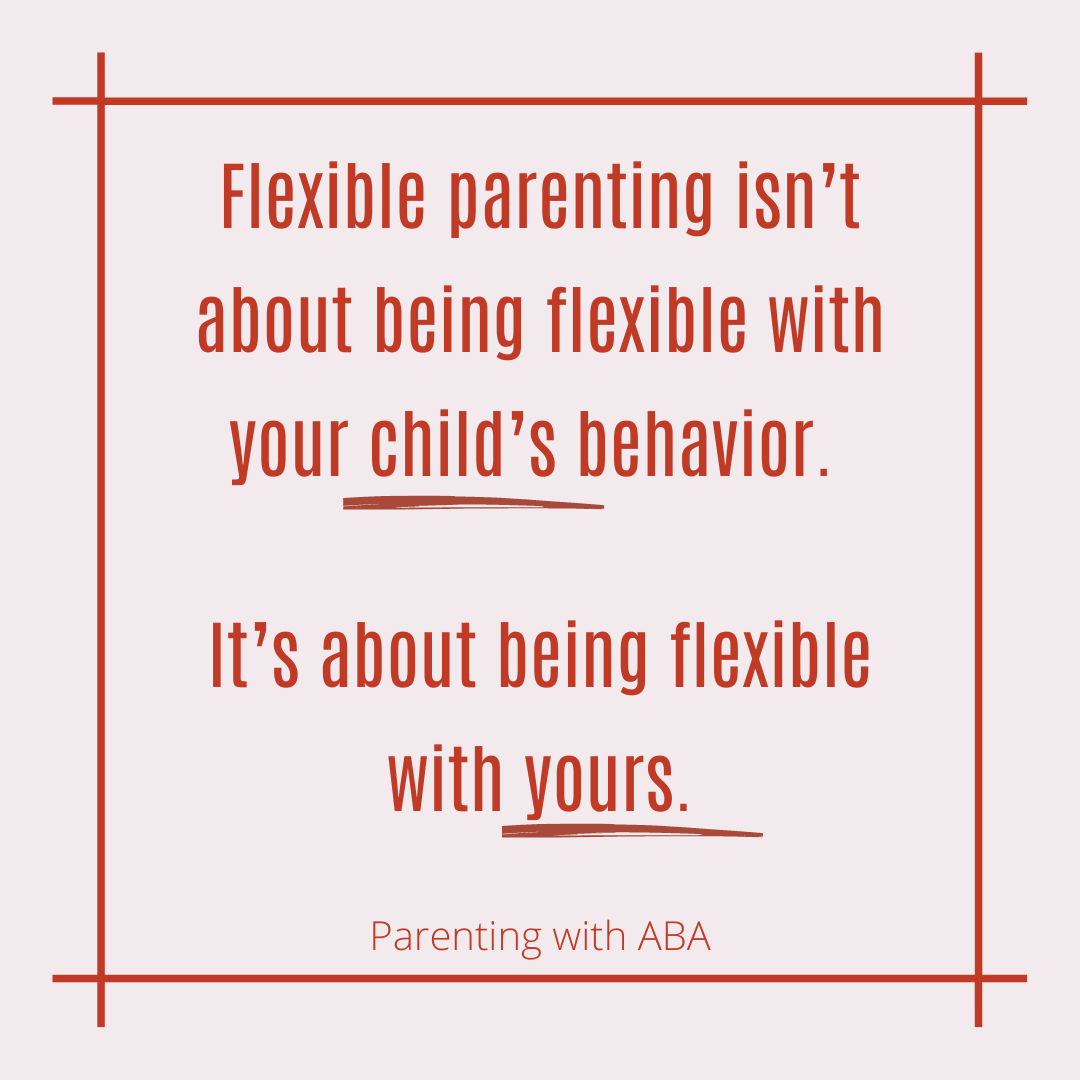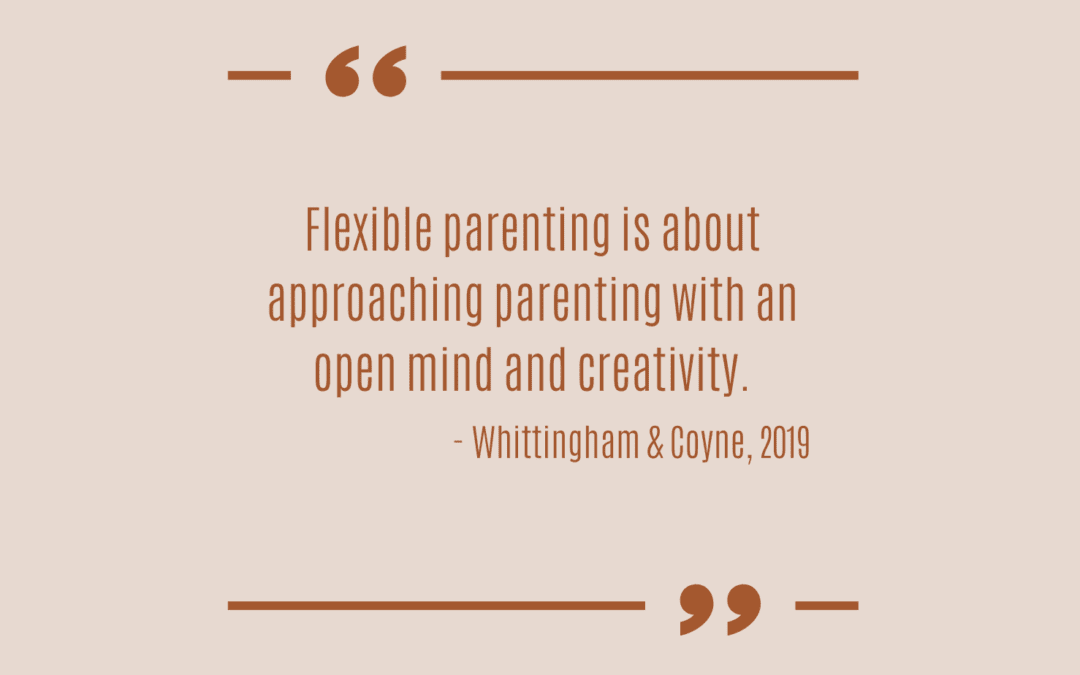“Flexible parenting is about approaching parenting with an open mind and creativity. It is about taking a flexible, experimental approach to parenting- an approach of discovering what works for you and for your child.” (Whittingham & Coyne, 2019)
It’s all about workability. What is working for you and your child? What isn’t working? If it’s not working- change it!
Sometimes I speak at local moms’ groups. When my kids were little I would talk about myself using the “First __(do the thing)__, then __ (get the reward)__.” This is the research-based tool called the Premack Principle that you can learn more about here.
My personal example was about putting my own littles into the car. Getting tiny people buckled into 5-point harnesses can be challenging sometimes. So we kept some soft books in the car and would say, “First buckle, then books.” My kids knew that they had to do the first thing (get buckled) in order to get something, they found rewarding (books to hold and look at). I gave this personal example at many moms’ club.


One moms’ club I was asked to speak again the following year. One mom comes up to me a little hot under the collar, ready to call me out. She said “I’ve been using ‘First buckle, then books’ for a whole year and I still can’t get my son buckled into the car without a struggle! It doesn’t work!”
After a quick personal moment of panic and imposter syndrome, I responded, “Does your son like books?” Can you guess what the mom said?? Nope. He didn’t like books.
Y’all. Please don’t waste your most precious resources on strategies that just don’t work for you and your child. Your time, your energy, and your patience are so highly valuable that I want to help you conserve and maximize each one.
It’s all about workability. If something is working- don’t stop! If something isn’t working- make a change!
If your child is struggling to do something that you are sure they know how to do/ have the skills to do, there are 2 ways we typically approach this as a behaviorist.
- Lower the response cost. Make it easier for them. Rearrange the physical environment, give more prompts or cues, or give more support. Find a way to lower the bar just a bit and just make it easier for your child. You can gradually raise that bar back up later once you’re having some success.
- Increase reinforcement. When a child isn’t doing a behavior or skill, we have to ask ourselves “Is this a can’t do or won’t do?” If it’s a won’t do, make it more motivating for them. Use positive reinforcement to make it worth their while.
In flexible parenting, we have the option to play with these things like making tasks easier and/or more motivating. If something isn’t working- we make adjustments. We don’t just let it slide and then bash the mom’s club speaker after wasting a whole year on a behavior tool that wasn’t a good fit.
Flexible parenting isn’t about being flexible with your child’s behavior. It’s about being flexible with yours. If something isn’t working, change YOUR behavior. Be willing to get creative to find new and different ways to connect with your child. Instead of digging your heels in and standing firm in every single parenting book or strategy you’ve ever heard- dance lightly around trying to find the best way to help your child learn and grow.
Discover what works best for you and your child. You know your child better than anyone. Find what works best for you both! When you try a new parenting tool, pay attention to see if it’s working. You are an experimenter, and you need to know when to celebrate, when to fade out, and when to make changes. Do this by simply watching and acknowledging how things are going.
Let’s be flexible and creative in our parenting together.

Recent Comments